
- Tutorial: Model-based management
- Tutorial: Greenhouse Gas Measurements
- Workshop: Smart Energy Systems
Half-day Tutorial
Organizer(s): Tatsuya Yokota (National Institute for Environmental Studies, Japan)
Estimated Schedule: 14:00 – 17.00 September 20 (Tue), 2016
Satellite remote sensing is a powerful tool to monitor the earth’s environment globally and frequently. However, monitoring of greenhouse gases (GHGs); carbon dioxide (CO2) and methane (CH4) from space is still challenging. There exist several disturbances such as aerosols and thin cirrus in the atmosphere and large variations of ground surface albedo and surface pressure, to estimate GHG accurately and precisely. JAXA launched the Greenhouse gases Observing Satellite (GOSAT, ”IBUKI”) in 2009 and has been operating two instruments: TANSO-FTS and CAI, and providing the calibrated radiance spectra to NIES for more than seven years. NIES has processed these radiance spectra and retrieved column amount of GHGs, and estimated carbon flux estimates using GOSAT data, and provided the GOSAT products to researchers and general users. Long-term and accurate mounting needs wide area of applied physics such as optics, servo-controlled mechanics for pointing, molecular spectroscopy, solar physics as light source, radiative transfer in the earth’s atmosphere, and metrology. Since the satellite launch, many worldwide researchers have analyzed the GOSAT data, improved the retrieval accuracy, and reduced uncertainty in global GHG flux estimates. Furthermore entirely new application have been developed. In this tutorial session, we will instruct the SICE members about the new remote sensing technique using a high resolution spectrometer and several related issues.
Lecture 1:
Outline of the Japanese Satellite GOSAT project for global greenhouse gas measurements
Abstract: In this lecture, the outline of the GOSAT project is presented as an introduction of this tutorial session. GOSAT project is a joint effort of the Japan Aerospace Exploration Agency (JAXA), the National Institute for Environmental Studies (NIES), and the Ministry of the Environment (MOE) of Japan. The GOSAT three parties, JAXA, NIES, and MOE have shared their responsibilities. They have also managed the GOSAT Science Team and promoted the GOSAT Research Activities jointly. Brief history of the GOSAT project is also shown here.
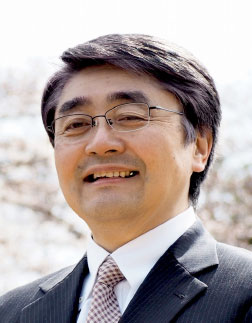 Speaker: Tatsuya Yokota (National Institute for Environmental Studies)
Speaker: Tatsuya Yokota (National Institute for Environmental Studies)
Short Biography: Tatsuya Yokota received B.S., M.S., and Ph.D. degrees in Measurement and Information Systems Engineering from the University of Tokyo in 1979, 1981, and 1987, respectively. Since FY1981, he has been working for the National Institute for Environmental Studies (NIES), Japan. His specialty is information processing and atmospheric remote sensing. He is now a NIES Fellow, and is the NIES Greenhouse gases Observing Satellite (GOSAT, “IBUKI”) project acting leader since FY2016. He is a member of SICE, IEEE_GRS-S, JpGU, MSJ, RSSJ.
Lecture 2:
How to measure greenhouse-gases globally for a decade from space: instrument design, operation, and data processing
Abstract: The Thermal And Near infrared Sensor for carbon Observation Fourier-Transform Spectrometer (TANSO-FTS) on Greenhouse gases Observing Satellite (GOSAT) is the first space-borne FTS to cover wide spectra from 0.76 to 15μm measuring both solar-reflection and thermal emission. A dataset containing more than 7 years (February 2009 to present) of radiance-spectra for carbon dioxide (CO2) and methane (CH4) observations has been acquired. JAXA is responsible for the onboard instruments development and operation, Level 0 - 1 processing of GOSAT data and the GOSAT Level 1 products. A brief overview of the GOSAT project, scientific requirements, instrument designs, hardware performance, on-orbit operation, and data processing are instructed.
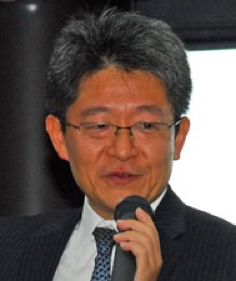 Speaker: Akihiko Kuze (Japan Aerospace Exploration Agency)
Speaker: Akihiko Kuze (Japan Aerospace Exploration Agency)
Short Biography: Akihiko Kuze received the B.S. and M.S. degrees in geophysics and the D.S. degree in earth and planetary science from the University of Tokyo in 1986, 1988, and 2003. He was previously with the Space Systems Division, NEC Corporation, and the Harvard-Smithsonian Center for Astrophysics. Currently, he is with the Japan Aerospace Exploration Agency, Tsukuba, Japan. He has been involved in the GOSAT onboard instrument development, calibrations, and level 1 algorithm for almost 15 years. He is a member of SICE, JpGU, AGU, OSA, SGEPSS, JpSAC, MSJ.
Lecture 3:
Calibration and validation for space-based greenhouse gases measurement
Abstract: The Thermal And Near infrared Sensor for carbon Observation Fourier-Transform Spectrometer (TANSO-FTS) on Greenhouse gases Observing Satellite (GOSAT) is the first space-borne FTS to cover wide spectra from 0.76 to 15μm measuring both solar-reflection and thermal emission. GOSAT Level 1 spectra with CO2 and CH4 absorptions are distributed for Level 2 users to retrieve CO2 and CH4 concentrations. At first step, we validate the spectral radiance and geolocation to evaluate accuracies and make bias corrections for much improvement. One field campaign is conducted at Railroad Valley playa in Nevada US every year in collaboration with NASA OCO-2, which is a CO2 remote-sensing satellite same as the GOSAT. We perform in-situ measurements such as surface reflectance, atmospheric profile by radiosonde and column-averaged mixing ratio by ground-based FTS coincident with GOSAT observations. On the other hand, evaluation of long-term stability and accuracy is performed by comparing with the same type sensor observations at on-orbit coincidences.
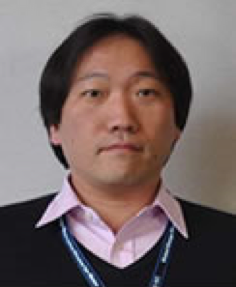 Speaker: Kei Shiomi (Japan Aerospace Exploration Agency)
Speaker: Kei Shiomi (Japan Aerospace Exploration Agency)
Short Biography: Kei Shiomi received the B.S. and M.S. degrees in earth and planetary physics and the D.S. degree in earth and planetary science from the University of Tokyo in 1996, 1998, and 2001 for sensor development of mars atmospheric explorer. Then, he worked at Remote Sensing Technology Center of the Japan in 2001-2004 for microwave remote sensing. He is currently at Earth Observation Research Center, Japan Aerospace Exploration Agency since 2004. He has been involved in the GOSAT calibrations and data use. He is a member of AGU, SGEPSS, JpSAC, RSSJ.
Lecture 4:
Inverse modeling of the regional greenhouse gas fluxes based on GOSAT data
Abstract: Regional scale emissions and sinks of the atmospheric greenhouse gases carbon dioxide and methane are estimated by applying models of the atmospheric transport and chemical transformations, followed by inverse modeling analysis. Inverse modeling techniques are widely applied in wide range of technologies from optimizing industrial processes and seismic data processing in geological exploration to routinely used GPS receivers. To estimate surface emissions and sinks of atmospheric trace gases we make atmospheric transport simulations based on realistic wind data provided as a global three-dimensional grid by weather forecast centers. The observations made by a global network of surface monitoring sites and measurements made by GOSAT (Greenhouse gas observing satellite) are compared to model simulation, after that the model input parameters, which are the surface gas distributions, are optimally adjusted to make a best match with observations. Estimated fluxes help understanding the sensitivity of the land biosphere carbon emissions and sinks over large regions to climate anomalies such as El Nino.
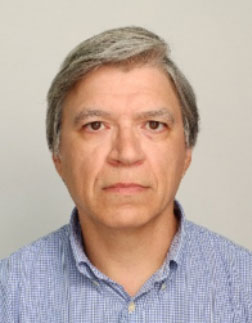 Speaker: Shamil Maksyutov (National Institute for Environmental Studies)
Speaker: Shamil Maksyutov (National Institute for Environmental Studies)
Short Biography: Shamil Maksyutov received MS degree in physics and mechanics of chemical processes in 1980, and PhD degree in chemical physics in 1983, both from Moscow Institute of Physics and Technology. His area of expertise is global atmospheric tracer transport modeling and inverse modeling of surface CO2 fluxes. He is working as a head of Biogeochemical modelling and analysis section at the Center for Global Environment research, National Institute for Environmental Studies. He is a member of AGU, JpGU, MSJ, JpSAC.
Lecture 5:
International collaboration and future missions of Greenhouse gas measurements from space
Abstract: GOSAT is the first satellite in the world designed to measure greenhouse gases (GHGs) dedicatedly. GOSAT is operating for more than seven-and-a-half year since January 2009. Therefore, many researches in the world have been conducted within the framework of the GOSAT Research Announcement, and more than 200 scientific papers related on GOSAT have been published by now. In the research fields of data retrieval algorithms development and carbon sources-and-sinks estimation, we have collaborated with worldwide research groups and have yielded many achievements with them. Several practical achievements are introduced in this lecture. The future space-based GHG monitoring missions including Japanese GOSAT-2, which will lead to even more new findings and advances in carbon cycle studies, are also presented briefly here.
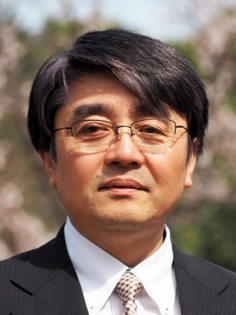 Speaker: Tatsuya Yokota (National Institute for Environmental Studies)
Speaker: Tatsuya Yokota (National Institute for Environmental Studies)
Short Biography: Tatsuya Yokota received B.S., M.S., and Ph.D. degrees in Measurement and Information Systems Engineering from the University of Tokyo in 1979, 1981, and 1987, respectively. Since FY1981, he has been working for the National Institute for Environmental Studies (NIES), Japan. His specialty is information processing and atmospheric remote sensing. He is now a NIES Fellow, and is the NIES Greenhouse gases Observing Satellite (GOSAT, “IBUKI”) project acting leader since FY2016. He is a member of SICE, IEEE_GRS-S, JpGU, MSJ, RSSJ.
Tutorial/Workshop Co-Chairs
Eiichi Yoshida (AIST)
Mihoko Niitsuma (Chuo Univ.)
Program Chair
Tetsuo Kotoku, AIST, Japan
Deadline of Proposal of Workshops and Tutorials (extended)
Deadline of Proposal of Organized Sessions (extended)
Deadline of Submission for Regular Papers(extended) and Position Papers (4/22)
Notification of Paper Acceptance (July 1, 2016: Submission of Final Camera-ready Papers)